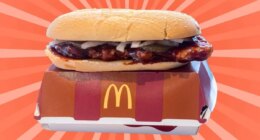
Visceral fat is the fat around your belly between the skin and the outer abdominal wall. It’s dangerous and is linked to the release of proteins and hormones that cause inflammation that can damage your arteries, enter your liver and increase the risk of serious health problems. Express.co.uk chatted to Signe Svanfeldt, nutritionist at Lifesum (www.lifesum.com), the world’s number one nutrition app to find out how to get rid of visceral fat.
You can have a fairly flat stomach and have lots of visceral fat – visceral fat is different from subcutaneous fat.
Subcutaneous fat is the fat stored just under our skin that we can feel on our arms and legs, whereas visceral fat is stored within our abdomen and cannot be felt.
An MRI scan is the most certain way to tell if you are storing excess visceral fat, but taking a waistline measurement with a tape measure will suffice.
According to BUPA, a woman with a waist measurement of 31.5 inches or more and a man with a waist measurement of 37 inches or more has excess visceral.
READ MORE- Alcoholic fatty liver disease: The condition affects ‘heavy drinkers’
Even though losing visceral fat is about changing your diet and lifestyle on the whole rather than following a restrictive diet, there are a few food swaps you can make if you’re not sure where to start.
READ RELATED: Weight loss: Top five minute ab moves to help burn belly fat fast according to trainer
Signe recommends the following food swaps:
- whole-grain options instead of refined grains
- water instead of sweetened beverages
- whole fruits instead of jam and marmalade
- vegetables sticks with dip instead of crisps
- roasted potatoes instead of fries
- low-fat dairy instead of full-fat dairy
- The 3 best foods to help reduce visceral fat
There are no specific foods that will help you shed your visceral fat, but you should try and up your intake of three food groups: dietary fibre, lean protein, and healthy fats.
Signe said: “Again, it’s not about a single good or bad food. It’s the whole picture.
“Inactivity along with an energy-dense, nutrient-poor diet, filled with saturated fats, added sugars and sodium lead to weight gain, which can lead to an increased amount of visceral fat.
“When wanting to get rid of visceral fat, a healthy, balanced diet will help you a long way.
“A balanced and healthy diet includes, dietary fibre such as whole-grain bread, oats, vegetables and fruits, lean protein such as beans, lentils, fish, tofu, egg, poultry and healthy fats such as avocado, salmon, olive oil, nuts and seeds.”
You should also aim to drink about two litres of water a day, every single day.
Source: Daily Express | Diet





